
(a) Post-treatment forest structure and two people sampling fuels from the 0 to 1.7 m and 2.8 to 4.5 m plots within
the clustered design. (b) A plot placed between two whiskers to mark the distance intervals and the strings stretched
across the PVC sampling frame to denote the randomly generated 20 × 20 cm subplot for collecting the plot’s
observation. Black markings on the PVC sampling frame are at 20 cm intervals to create the grid of 36 subplots. (c)
Two people collecting a dead fine fuel sample into a pre-labeled and pre-weighed polyethylene resealable bag.

The observation period was organized into three phases: early summer (Julian day 138–189), mid-summer (Julian day
192–236) and late summer (Julian day 243–287) for the following plots. The dashed lines on the axes depicting FMC indicate
the commonly used 30% moisture of extinction threshold for dead understory forest fuels ( Rothermel et al. 1986). (a)
Empirical cumulative density functions of the three distributions (early summer, mid-summer, late summer) of observed
fuel moisture content. (b) Kernel density plots of the three intraseasonal period distributions. (c) Boxplots colored by
intraseasonal period depicting the distribution of FMC on each observation day. The box indicates the inter-quartile range
(25th to 75th percentiles). The mid-band indicates the median, and the whiskers indicate points within 1.5 times the interquartile range. Points outside the whiskers are outliers. Note: to visualize the data more effectively, the axes depicting
FMC (%) were visually constrained to 150%, preserving all values while focusing on a more relevant range.

The smoothed, marginal effects of understory cover, canopy cover, heat load index and precipitation on FMC
transformed to show the fitted GAM function on the response scale. The x axis shows values of the covariate, the rug
indicates the distribution of covariate observations, and the y axis shows expected FMC values. The gray bands
correspond to the 95% confidence interval and represent model uncertainty in the transformed (response scale)
estimate. Though negative values are not possible in FMC or under a Gamma distribution, the confidence interval
below 0 in the precipitation plot is an artifact of transformation and reflects wide uncertainty.
🔥New in IJWF:
Ohlson et al. map fine dead fuel moisture across a Colorado mixed-conifer forest using 1-h fuel samples from 80 plots. They reveal strong fine-scale spatiotemporal variability shaped by canopy, understory, and aspect.
🔗 doi.org/10.1071/WF25...
#IJWildlandFire
20.11.2025 07:04 — 👍 8 🔁 4 💬 0 📌 0

Fire frequency between 1989 and 2021 and land use and land cover (LULC) in 2021 from the Carajás National Forest, Eastern
Amazon, Pará, Brazil. Forest areas are not delineated; i.e. they correspond to areas outside the anthropised and canga areas. The
embedded pie chart shows the accumulated fire scars per LULC class; note that profound changes in LULC during the observation
period ( Fig. 1) were considered for construction of the chart.

Time series data of the annual proportion of burned areas (%) within Campo Ferruginosos National Park and Carajás National
Forest and possible fire drivers (Amazonian and regional deforestation, annual precipitation and climatic severity) for the period
1989–2021 (a) and correlations between potential fire drivers and the annual proportion of burned areas, separated by area (b). The
dashed lines in (a) represent the 5-year trends. The dashed lines in the scatterplots (b) represent the linear relationships between the
rainfall, climatic severity, and deforestation trends and the annual proportion of burned areas.
🔥New in IJWF
Sanjuan et al. analyse 33 years of fires in Amazonian canga, showing stark contrasts between long-protected Forest and recently protected Forest. They find land-use history drives fire occurrence while dry-season rainfall controls intensity.
🔗 doi.org/10.1071/WF24...
#IJWildlandFire
15.11.2025 04:29 — 👍 9 🔁 2 💬 0 📌 0

Fig. 1. The geographic, environmental and management context of
the four study locations in the Australian deserts. (a) The main
vegetation types (data from National Vegetation Information
System (NVIS) 6.0 downloaded July 2023) and rainfall isohyets (data
from Bureau of Meteorology (BoM)). Non-shaded areas represent
either minor vegetation types, or non-desert vegetation of the
northern savannas. (b) Areas that are owned or managed/comanaged by Indigenous groups; and areas that are managed for
conservation as part of the National Reserve System by the government, private organisations, and Indigenous groups. Non-shaded areas
on the map are non-Indigenous tenures not managed for conservation. Data on Indigenous ownership and management were obtained
from Australian Bureau of Agricultural and Resource Economics and
Sciences; and data on protected areas from Collaborative Australian
Protected Areas Database (downloaded 12 March 2023). (c) The annual
rainfall for the four study locations, over the study period 1997–2019
(data resourced from Scientific Information for Land Owners (SILO),
downloaded 18 Jan 2023). Note the high rainfall in 2000–2001 and
2010–2011, especially at Newhaven and Tanami.

Fig. 2. Annual fire extent and fire season. (a) The annual fire extent in the managed and baseline periods.(b) Annual fire extent in
relation to variation in rainfall during the preceding 2 years; data for Pinpi, Katjarra and Newhaven are grouped, and shown separately
to data from Tanami. (c) The proportion of each year's fire extent that occurred in the hot season, in conditions of low, moderate,
and high rainfall in the preceding two years; data for the baseline period and the managed period are shown separately. Data for Pinpi,
Katjarra and Newhaven are grouped, and shown separately to data from Tanami. (d) An example of the accumulated cool (blue
shading) and hot season (orange shading) fires for the baseline and managed periods is shown for Pinpi.
🔥New in IJWF:
Cliff et al. evaluate a decade of Indigenous-led fire management across 4 Australian desert sites. The shift to cooler-season, smaller burns improved fire heterogeneity and cultural engagement.
🔗 doi.org/10.1071/WF25...
#IJWildlandFire
12.11.2025 06:33 — 👍 6 🔁 2 💬 0 📌 0
🔥New in IJWF:
Desservettaz et al. provide a comprehensive review addressing Australian firefighters’ concerns about bushfire smoke. The article outlines health risks, gaps in PPE protection, off-gassing, dermal exposure, and mitigation strategies.
🔗 doi.org/10.1071/WF25138
#IJWildlandFire
05.11.2025 00:05 — 👍 5 🔁 3 💬 0 📌 0
1/4 - Check our new paper in @ijwildlandfire.bsky.social
We use MOEA optimisation to support decisions for #wildfire risk reduction (e.g., where should we use prescribed burning to reduce risk?). Optimisation improves fuel treatment plan effectiveness by 80–280% and adapts to changing objectives.
31.10.2025 00:05 — 👍 8 🔁 4 💬 4 📌 0

Top-left plot shows the performance
of Pareto-optimal fuel treatment plans (black
points) for the BP-area objective that aims to
reduce burn probability (BP) to the entire
Adelaide Hills region. Light grey points represent non-Pareto fuel treatment plans that were
considered as part of the optimisation process.
Other plots show selected fuel treatment plans
matching a range of different levels of area
treated (AT), as indicated by crosses on the
Pareto front. The selected solutions show that
the specific treatment blocks chosen in a plan
can change significantly for different levels of
AT. Comparisons are made between plans with
an AT of 1.01 or 1.07% and 4.91 or 5.17%. Areas
that are unique between the plans at the two
levels of comparison are shown in colour and
areas chosen by both plans are shown in black.
Reduction in BP is calculated using the baseline
BP as modelled with the metamodel.
🔥New in IJWF:
Radford et al. introduce a simulation-optimisation framework using neural network metamodels and NSGA-II to create fuel treatment plans that reduce burn probability by up to 284%, this method balances risk reduction and resource use.
🔗 doi.org/10.1071/WF25080
#IJWildlandFire
30.10.2025 20:26 — 👍 6 🔁 3 💬 0 📌 0
🔥New in IJWF:
Desservettaz et al. review the complex composition and health risks of bushfire smoke for firefighters, offering evidence-based guidance on exposure reduction, PPE use, and decontamination.
🔗 doi.org/10.1071/WF25138
#IJWildlandFire
30.10.2025 09:53 — 👍 5 🔁 3 💬 0 📌 0

In short: connectsci.au brings a new look and features, but with the same high standards and publication ethics.
Browse International Journal of Wildland Fire:
connectsci.au/wf
22.10.2025 01:26 — 👍 5 🔁 0 💬 0 📌 0


Powered by @csiropublishing.bsky.social , connectsci.au prioritises accessibility, discoverability & functionality, incl:
- better search filtering across article types&subjects
- journal article split screen view
- nuanced email notification options, inc. saved search alerts: connectsci.au/sign-in
22.10.2025 01:25 — 👍 4 🔁 1 💬 0 📌 0

Today @csiropublishing.bsky.social launched ConnectSci, a new global destination for trusted science content, hosting our journal, eBooks and a science news service.
You can now find International Journal of Wildland Fire here:
connectsci.au/wf
So, what's new for readers and authors?
22.10.2025 01:25 — 👍 5 🔁 2 💬 0 📌 0

Fig. 1. Geometric structure of symmetric canyon (a); experimental set-up (b); and schematic diagram (c).
🔥New in IJWF:
Fan et al. investigate canyon fire dynamics under varied terrains, revealing critical slope thresholds (α ≥ 27.5°, δ ≥ 20°) for eruptive fire. Strong convective heating ahead of the fire front drives rapid spread, challenging strategies.
🔗 doi.org/10.1071/WF24...
#IJWildlandFire
17.10.2025 02:12 — 👍 4 🔁 2 💬 0 📌 0

The most common barrier identified in each dispatch zone (top); and the most common barrier
constructed through human landscape modification (bottom).
🔥Most Read
Epstein & Seielstad analyse WFDSS text from 6,630 large US wildfires (2011–2023). Barriers appear in 75%—mainly roads, burn scars and fuel variation. Prior fires more often stopped spread than treatments.
🔗 doi.org/10.1071/WF25051
#IJWildlandFire
08.10.2025 04:21 — 👍 4 🔁 3 💬 0 📌 0

Fuel treatment sequence and categorization. In a two-stem process, large number of specific treatments were categorized and
combined based on their sequence, and then further combined based on the dominant characteristic of the modification of fuels.
🔥Most Read
Fallon et al. present a novel methodology to assess fuel treatment effectiveness in California forests. Using FTEM and FACTS data, they show 61% of treatments modified fire behavior, with fire or removal-based treatments most effective.
🔗 doi.org/10.1071/WF24220
#IJWildlandFire
28.09.2025 21:10 — 👍 8 🔁 2 💬 0 📌 0

Wildfire hazard maps generated using different connection methods coupled with the logistic regression (LR) algorithm.
Subfigures (a–f) are based on wildfire samples as classification criteria of factor attributes, and subfigures (g–l) are based on the
whole area (PS: probability statistics; FR: frequncy ratio; IV: information value; CF: certainty factor; WOE: weights of evidence; EBF:
evidential belief function).
🔥 New in IJWF:
Yue et al. present a comprehensive wildfire risk framework for Sichuan, China, integrating hazard and vulnerability. Using six statistical connection methods with logistic regression, they identify the Point-IV-LR model as most effective.
🔗 doi.org/10.1071/WF25089
#IJWildlandFire
14.09.2025 09:27 — 👍 6 🔁 2 💬 0 📌 0

🏠🔥New in IJWF:
Gjedrem et al. (2025) examine fire risk perception and garden adaptation in Tasmania’s WUI. Residents often underestimate hazards, but personalised garden hazard reports motivated change despite knowledge, resource, and emotional barriers.
🔗 doi.org/10.1071/WF24213
#IJWildlandFire
08.09.2025 00:27 — 👍 7 🔁 3 💬 0 📌 0
Brief:
Wildland-urban interface fires pose a challenge, driven by climate change, expanding settlements, and evolving fire regimes. Recent fires in LA, highlight the need to advance scientific understanding, policy, and adaptive management strategies to mitigate risks and enhance resilience.
05.09.2025 10:27 — 👍 1 🔁 0 💬 0 📌 0

🔥Call for Papers: Wildland-Urban Interface Fires Special Collection in IJWF!🌳🏠🌳
Share research on fire dynamics, risk modelling, resilience & more. If you have any questions, reach out to the team.
📆 Submit by 31 Dec 2025
More Information: www.publish.csiro.au/wf/content/C...
#FireScience
05.09.2025 10:23 — 👍 12 🔁 7 💬 1 📌 0

🌿 New in IJWF:
Krix et al. (2025) developed impact models for the Australian Fire Danger Rating System to predict structure loss from wildfires. Using structure density, cleared land, canopy height and terrain ruggedness.
🔗 doi.org/10.1071/WF24148
#IJWildlandFire
30.08.2025 01:54 — 👍 9 🔁 4 💬 0 📌 0

🌳New in IJWF
Wong et al. show that heat yields in wet sclerophyll fuels vary widely by species and season—especially in live understorey fuels. Fixed values in fire models may overestimate fire intensity.
📄 doi.org/10.1071/WF24227
#IJWildlandFire
23.08.2025 11:39 — 👍 6 🔁 2 💬 0 📌 0

🌿 New in IJWF:
O’Grady et al. shows how Machine Learning with Landsat can reconstruct fire histories across US military lands. Models achieved >93% accuracy, offering local-scale insights into ignition patterns & fire management for defense landscapes.
🔗 doi.org/10.1071/WF24214
#IJWildlandFire
17.08.2025 10:09 — 👍 4 🔁 3 💬 0 📌 0

The figure shows 2023 fire spread in two deserts and how recent past burns helped stop the fires.
🌿 New in IJWF:
Fisher et al. study the 2023 “Black Spring” in Australia’s northern spinifex deserts. Indigenous ranger-led burns created breaks that slowed or redirected wildfires, showing the potential of large-scale desert fire management to limit megafires. 🔥🌳
🔗 doi.org/10.1071/WF25002
09.08.2025 08:50 — 👍 9 🔁 3 💬 0 📌 0
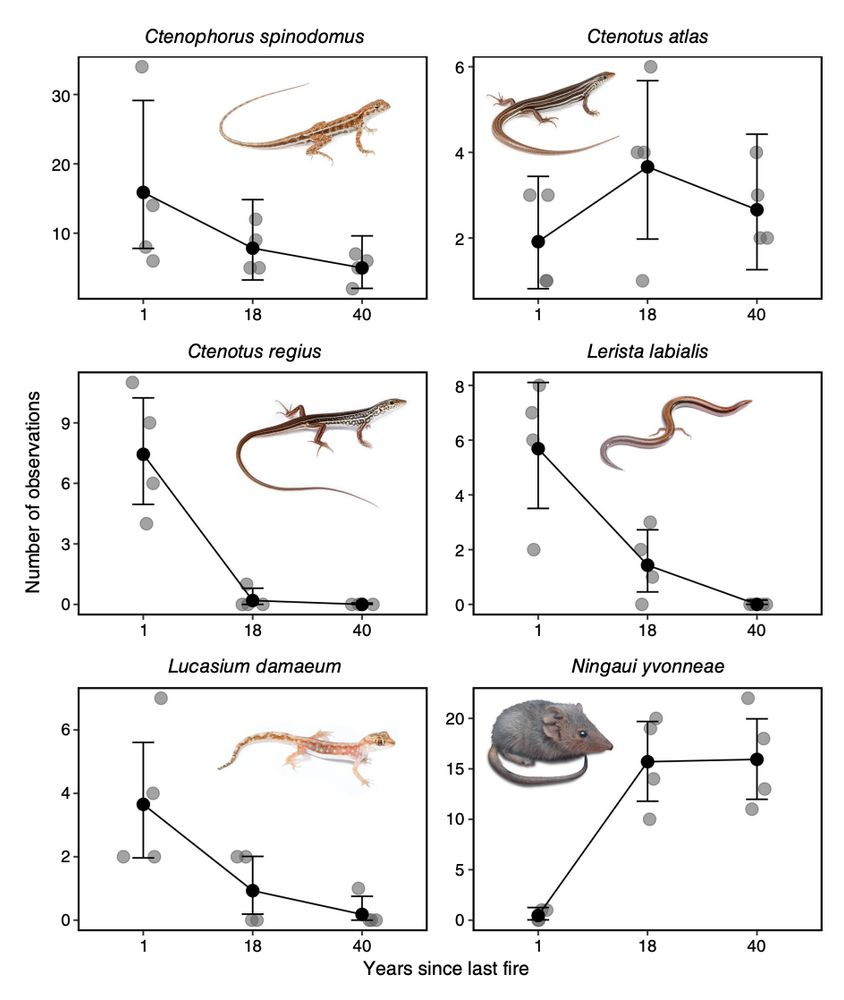
🌿 New in IJWF:
Farquhar et al. (2025) studied how reptiles and mammals respond to fire in Triodia-mallee woodlands. Some lizards peaked 1 year post-fire, while others like Ningaui yvonneae preferred long-unburnt, mature spinifex habitat. 🔥🦎
🔗 doi.org/10.1071/WF24...
#IJWildlandFire
02.08.2025 08:24 — 👍 8 🔁 2 💬 0 📌 0
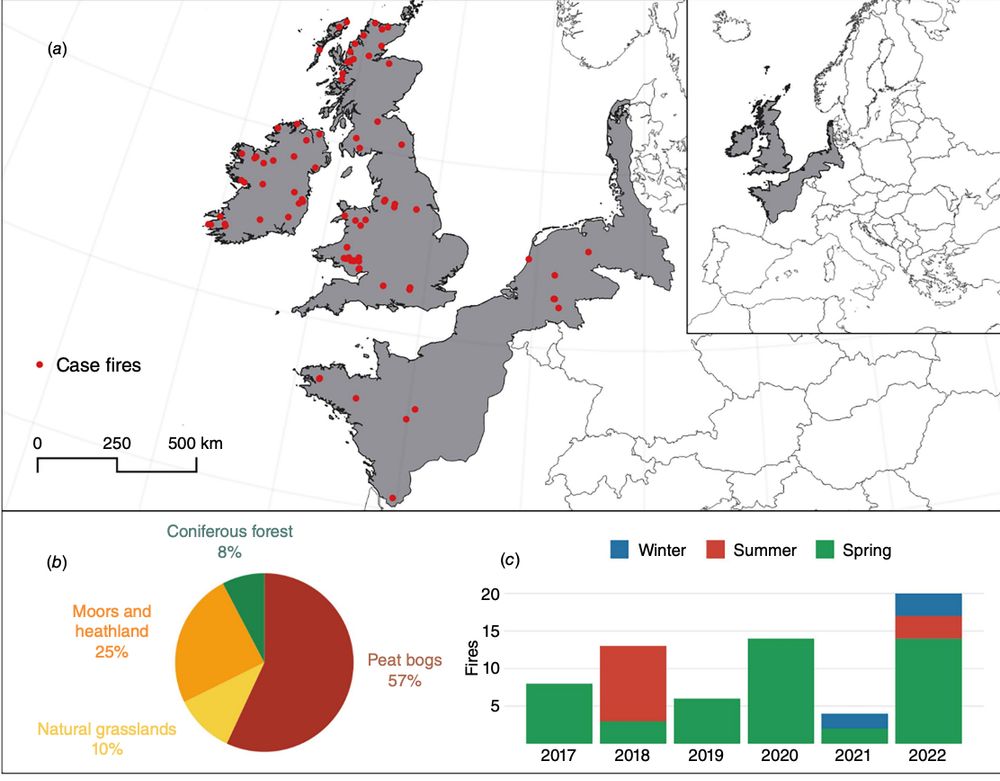
🌿 New in IJWF:
🔥 Quiñones et al. show that vegetation phenology—captured via remote sensing—strongly influences wildfire spread in NW Europe. Fires spread faster during vegetation dormancy, not peak fire weather. 🌿📡
🔗 doi.org/10.1071/WF24...
#IJWildlandFire
27.07.2025 11:11 — 👍 5 🔁 2 💬 0 📌 0
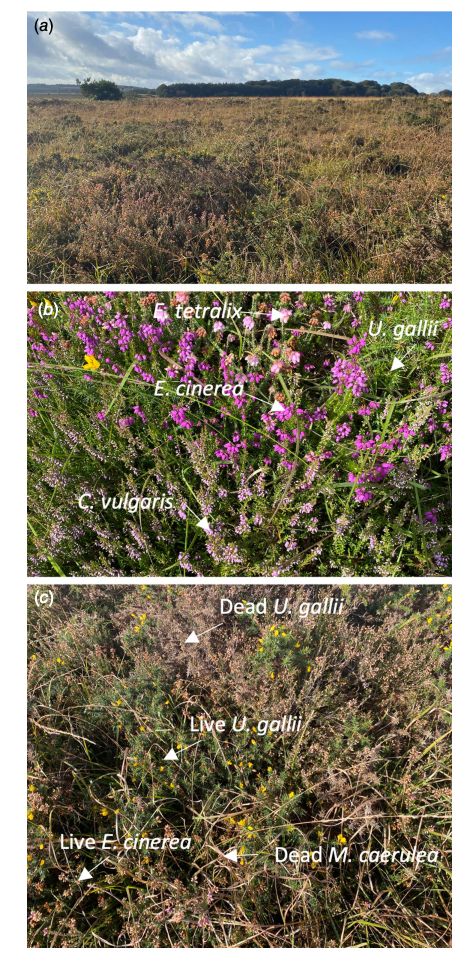
🌿 New in IJWF:
Belcher et al. explore seasonal changes in flammability across UK heathlands, showing that live fuel moisture dynamics drive shifts in fire behaviour. Their fuel modelling reveals up to 4× differences in fire spread based on phenology.
👉 doi.org/10.1071/WF24...
#IJWildlandFire
25.07.2025 01:19 — 👍 10 🔁 4 💬 0 📌 0
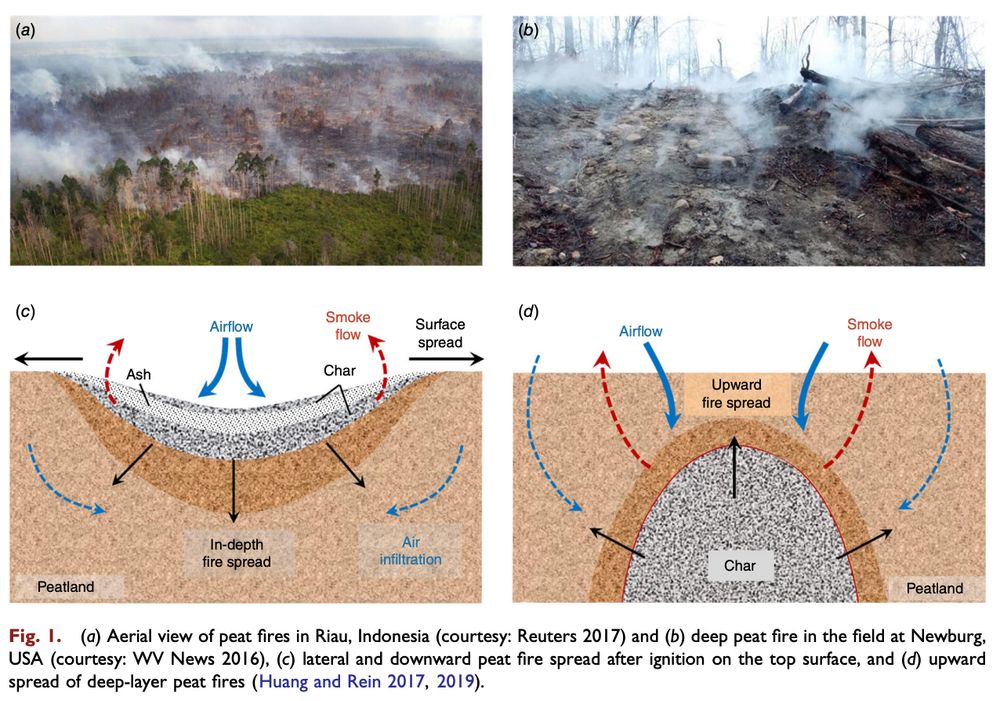
High cita📖 in IJWF:
Qin et al. show deep peat fires smoulder for 10+ days, moving up, down and sideways at ~300 °C under limited oxygen, yet losing <25 % mass and emitting detectable CO at the surface — a clue to locate hidden hotspots.
www.publish.csiro.au/WF/WF22143
#IJWildlandFire
18.07.2025 22:25 — 👍 6 🔁 4 💬 0 📌 0

Most read📖 in IJWF
Joshi et al. produced Australia’s first nationally consistent wildland fuel type map using satellite-derived vegetation structure. The dataset supports fire behaviour modelling and risk assessment across jurisdictions.
🛰️🔥
📖 doi.org/10.1071/WF24...
#IJWildlandFire
13.07.2025 23:24 — 👍 8 🔁 5 💬 0 📌 0
🙏 Editorial thanks from IJWF Co-EiC Martin Girardin
Dr. Martin celebrates IJWF’s growth, global reach, and evolving role in a rapidly changing field. From embracing AI and climate-fire complexity to diversifying the editorial board.
📖 : doi.org/10.1071/WF25...
##IJWildlandFire
07.07.2025 00:33 — 👍 5 🔁 2 💬 0 📌 0
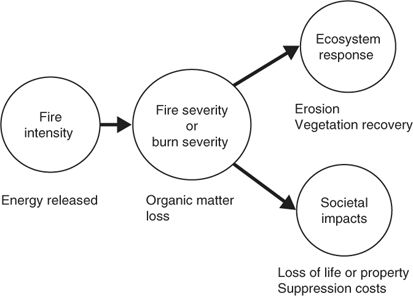
🔥 High Cita in IJWF:
Keeley’s review clarifies the critical distinctions among fire intensity, fire severity, and burn severity.
This paper argues for consistent terminology, separating energy release, organic matter loss, and ecosystem responses.
📖 Read: doi.org/10.1071/WF07...
#IJWildlandFire
01.07.2025 03:57 — 👍 7 🔁 3 💬 0 📌 0
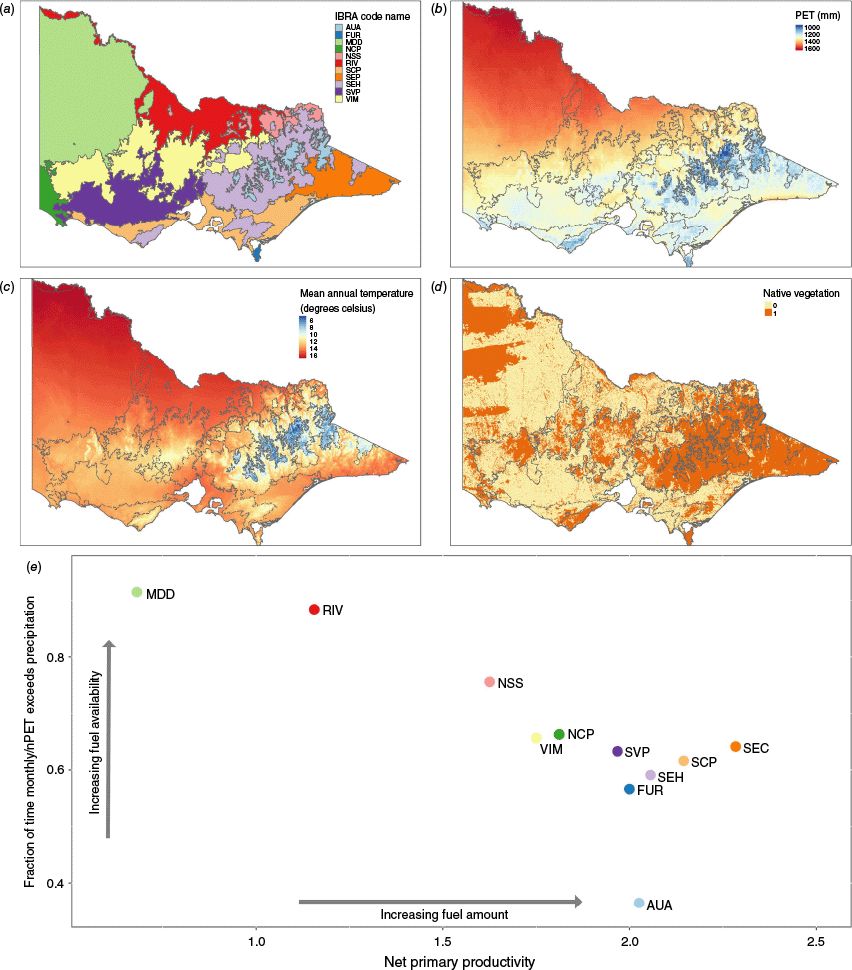
🔥 New in IJWF:
How will climate change reshape fuel hazards across landscapes?
McColl-Gausden et al. modelled future fire risks across Victoria, Australia and their findings highlight the urgent need for adaptive fuel management in a warming climate.
📖 Read: doi.org/10.1071/WF24...
#IJWildlandFire
26.06.2025 12:10 — 👍 6 🔁 9 💬 0 📌 0
Ecologist, skeptic, batrachophile and stats geek. Scientist by day, volunteer firefighter by night. This is a personal account. Follow/like/retweet ≠ endorsement.
Associate Professor at LSE Geography & Environment
🌏 environmental change & sustainability 🔥 wildfire emissions & models 🌴 tropical peatlands 👨🎓 innovative climate education #firstgen
Lecturer in Computer Science at University of Exeter interested in Earth Observation 🛰️ for Forest 🌲 ecology -#EO #AI #LiDAR #time-series #Forest Developer of DASOS & PloToSat
Web: https://art-n-maths.github.io/
Loves dancing💃 & improv 🎭
Easing extraction of EO 🛰️ time-series at multiple regions!
Code: https://github.com/Art-n-MathS/PlotToSat
Paper: https://www.sciencedirect.com/science/article/pii/S1364815225000799
@drmiltiadou.bsky.social @emilyrlines.bsky.social
Exeter and Cambridge
Advancing conservation knowledge and practice in Oceania.
https://www.scboceania.org
https://linktr.ee/scboceania
It's all about plants in the end
(and truffle diversity | soil carbon)
she/her 🏳️🌈 🌾🍄👩🏼🔬⛰️🌱
#WomenInSTEM #botany #fungi #seeds
PhD from UOregon 🇺🇸
Postdoc at the Australian National Uni 🇦🇺
#MSCA postdoc UiBergen '26 🇳🇴
HilaryRoseDawson.wordpress.com
Conservation genomics researcher @ MWLR in Aotearoa New Zealand 🧬🐦🐸🐛🌿 | Bird Nerd & President @birdsnewzealand.bsky.social | Secretary @scboceania.bsky.social | pākehā | she/her 🏳️🌈 Opinions are my own.
www.researchgate.net/profile/Natalie-Forsdick/research
Scientist Interested in all things oceans and climate (esp. carbon cycle). Bike rider, hiker and nature lover. Privileged white feminist. Advocate for diversity.
The #CopernicusClimate Change Service (#C3S) & #CopernicusAtmosphere Monitoring Service (CAMS), implemented by @ecmwf.int on behalf of the European Commission.
International Association of Wildland Fire
Followed by 2.5k on twitter (X): https://x.com/MLEarthSciences
We tweet/retweet papers related to machine learning/data science/deep learning for Earth and Environmental Sciences. Just email your paper details to mlearthsciences@gmail.com
#research #ML
European Geosciences Union is the leading organisation supporting Earth, planetary & space science researchers in Europe. #EGU26 3-8 May 2026. Online Mon-Fri 10-5 CET.
A little GIS, a little EnviroSci, a little Emergency Management, some Photography, and a lot of UCLA.
Science Communication - Journal Manager (CSIRO Publishing) - PhD in Plant Biochemsitry (University of Melbourne) - Sport (AFL, Cricket, Rugby, Football)
Having opinions on International Forest Policy / Biodiversity/ Climate/ REDD+ & passionate about Basic Income, nature & archery! Views are my own 🏹🌴🌳🦧
Transportation engineering professor. Road safety, planning, behavior, & culture; wildfire planning and response; inclusive disaster evacuation; ethics of tech in transportation; planning in the Petropyrocene. She/her.
Mental detritus etc and so forth. As seen on the internet since last century. Occasional Flathead Valley Police Blotter amanuensis. Gadigal, Australia.
Scientist-communicator working on water, wildfire, climate, & disaster issues in AZ + CA | Words: High Country News, New Republic, & more | Book: Getting to the Heart of Science Communication | Water Talk podcast co-host | www.faithkearns.com | views=mine
Weather and climate scientist focused on extreme events like floods, droughts, & wildfires on a warming planet. www.weatherwest.com





























